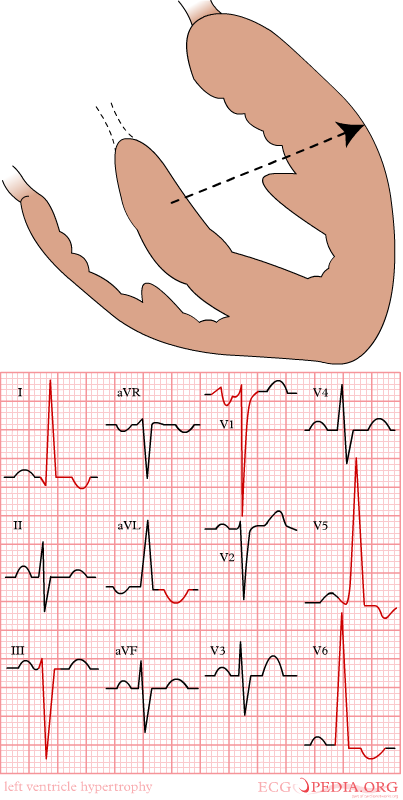Chronic hypertension electrocardiogram
|
Hypertension Main page |
Overview
An electrocardiogram (EKG/ECG) is performed to evaluate for the presence of left ventricular hypertrophy or silent myocardial infarction.
Electrocardiogram
Shown below is an EKG showing left ventricular enlargement. Note the large voltage in leads I, L and V5 and v6.

2013 ESH/ESC Guidelines For The Management of Arterial Hypertension (DO NOT EDIT)[1]
Summary of recommendations on the search for asymptomatic cardiovascular disease (DO NOT EDIT)[1]
| Class I |
| "1. An ECG is recommended in all hypertensive patients to detect LVH, left atrial dilatation, arrhythmias, or concomitant heart disease. (Level of Evidence: B)" |
| "2. Whenever history suggests myocardial ischaemia, a stress ECG test is recommended, and, if positive or ambiguous, an imaging stress test (stress echocardiography, stress cardiac magnetic resonance or nuclear scintigraphy) is recommended. (Level of Evidence: C)" |
| Class IIa |
| "1. In all patients with a history or physical examination suggestive of major arrhythmias, long-term ECG monitoring, and, in case of suspected exercise-induced arrhythmias, a stress ECG test should be considered. (Level of Evidence: C)" |
References
- ↑ 1.0 1.1 Authors/Task Force Members. Mancia G, Fagard R, Narkiewicz K, Redon J, Zanchetti A; et al. (2013). "2013 ESH/ESC Guidelines for the management of arterial hypertension: The Task Force for the management of arterial hypertension of the European Society of Hypertension (ESH) and of the European Society of Cardiology (ESC)". Eur Heart J. 34 (28): 2159–219. doi:10.1093/eurheartj/eht151. PMID 23771844.